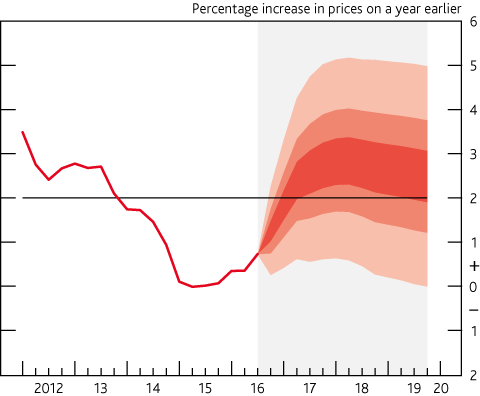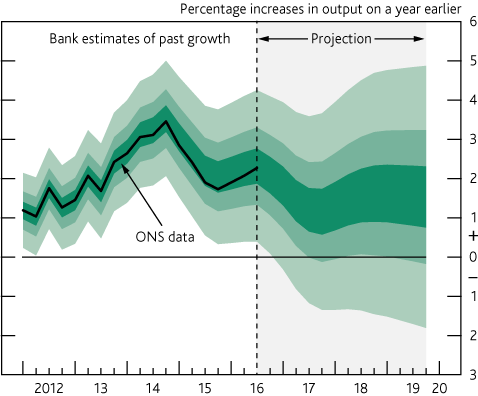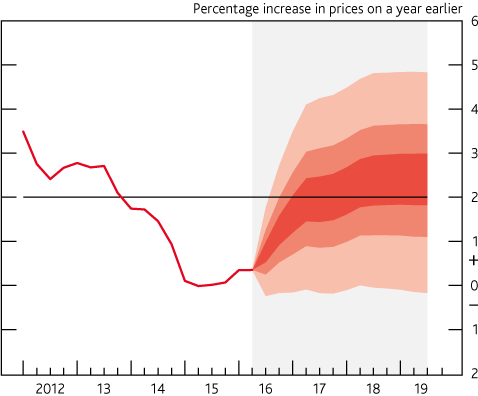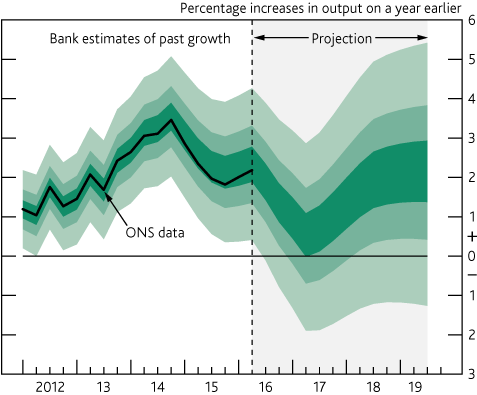Financial markets and global economic developments
In the United Kingdom, the MPC’s August policy package helped to lower interest rates and support asset prices. Since the start of October, however, UK gilt yields have risen sharply and by more than yields in other advanced economies, alongside a further depreciation in sterling. Global activity growth slowed during the first half of the year, but this weakness is expected to be temporary and growth will be supported by policy measures and financial conditions. Oil prices have risen, which will push up headline inflation rates.
Read more on financial markets and global economic developments
Demand and output
Output grew by 0.5% in Q3. This was slightly lower than Q2 growth and a much less marked slowing than expected at the time of the August Report. The near-term outlook for growth is also stronger. While investment intentions have weakened further since August, household spending appears to have remained robust and conditions in the housing market have been resilient. The past depreciation in sterling should support net trade and will boost the sterling value of foreign income, helping to narrow the current account deficit.
Read more on demand and output
Supply and the labour market
Employment growth has eased in recent months and surveys of employment intentions point to a further slowing in the near term. The softening in employment growth in 2016 H2 appears likely, however, to be more gradual than expected at the time of the August Report. Unemployment is projected to be stable in the near term. The outlook for output growth will depend in part on developments in supply, which will be sensitive to changes in trading arrangements between the United Kingdom and its economic partners. In the near term, productivity growth is projected to remain subdued.
Read more on supply and the labour market
Costs and prices
As in the August Report, inflation is projected to continue to rise over the near term. That partly reflects the effects of past falls in energy prices dropping out of the annual comparison. Further ahead, higher import prices associated with the past depreciation in sterling and the further significant fall since August are expected to push up inflation for several years. Only partially offsetting these effects, subdued domestic demand growth is likely to weigh on wage growth and
domestically generated inflation. Inflation expectations are judged to be broadly consistent with the MPC’s 2% target.
Prospects for inflation
As set out in the May Inflation Report, the implications for inflation and monetary policy of the vote to leave the European Union will depend on how demand, supply and the exchange rate adjust. Since August, near-term activity indicators have been better than expected. Despite that, sterling has again fallen sharply. That fall appears to have been associated with market participants’ perceptions that the United Kingdom’s future trading arrangements with the European Union might be less open than they previously thought likely. In the projections in this Report, the MPC has assumed that uncertainty about those arrangements remains elevated throughout the forecast period, weighing on both demand and supply. That drag is likely to be particularly pronounced for those firms who may be concerned that their access to EU markets could be materially reduced. In the MPC’s best collective judgement, conditional on a path for market interest rates that reaches 0.4% by late 2019, four-quarter GDP growth is likely to slow to around 1½%. That is stronger in the near term but weaker in the medium term than three months ago. Supply growth remains subdued so unemployment and slack increase only modestly. While domestic cost growth rises a little over the forecast period, imported cost pressures increase sharply due to the depreciation of sterling. As a result, and conditional on the market path for interest rates, inflation is projected to rise above the 2% target within the next twelve months and only begin to fall back in the second half of the three-year forecast period.




